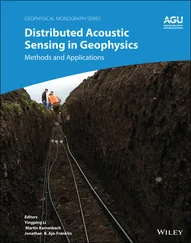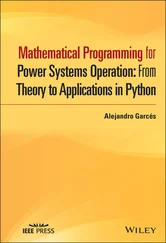1
Introduction to Distributed Systems
Computer systems are undergoing a revolution. From 1945, when the modern computer era began, until about 1985, computers were large and expensive. Even minicomputers normally cost tens of thousands of dollars each. As a result, most organizations had only a handful of computers, and for lack of a way to connect them, these operated independently from one another.
Starting in the mid-1980s, however, two advances in technology began to change that situation. The first was the development of powerful microprocessors. Initially, these were 8-bit machines, but soon 16-, 32-, and even 64-bit CPUs became common. Many of these had the computing power of a decent-sized mainframe (i.e., large) computer, but for a fraction of the price.
The amount of improvement that has occurred in computer technology in the past half century is truly staggering and totally unprecedented in other industries. From a machine that cost 10 million dollars and executed 1 instruction per second, we have come to machines that cost 1000 dollars and execute 10 million instructions per second, a price/performance gain of 10¹¹. If cars had improved at this rate in the same time period, a Rolls Royce would now cost 10 dollars and get a billion miles per gallon. (Unfortunately, it would probably also have a 200-page manual telling how to open the door.)
The second development was the invention of high-speed computer networks. The local area networksor LANsallow dozens, or even hundreds, of machines within a building to be connected in such a way that small amounts of information can be transferred between machines in a millisecond or so. Larger amounts of data can be moved between machines at rates of 10 to 100 million bits/sec and sometimes more. The wide area networksor WANsallow millions of machines all over the earth to be connected at speeds varying from 64 Kbps (kilobits per second) to gigabits per second for some advanced experimental networks.
The result of these technologies is that it is now not only feasible, but easy, to put together computing systems composed of large numbers of CPUs connected by a high-speed network. They are usually called distributed systems,in contrast to the previous centralized systems(or single-processor systems) consisting of a single CPU, its memory, peripherals, and some terminals.
There is only one fly in the ointment: software. Distributed systems need radically different software than centralized systems do. In particular, the necessary operating systems are only beginning to emerge. The first few steps have been taken, but there is still a long way to go. Nevertheless, enough is already known about these distributed operating systems that we can present the basic ideas. The rest of this book is devoted to studying concepts, implementation, and examples of distributed operating systems.
1.1. WHAT IS A DISTRIBUTED SYSTEM?
Various definitions of distributed systems have been given in the literature, none of them satisfactory and none of them in agreement with any of the others. For our purposes it is sufficient to give a loose characterization:
A distributed system is a collection of independent computers that appear to the users of the system as a single computer.
This definition has two aspects. The first one deals with hardware: the machines are autonomous. The second one deals with software: the users think of the system as a single computer. Both are essential. We will come back to these points later in this chapter, after going over some background material on both the hardware and the software.
Rather than going further with definitions, it is probably more helpful to give several examples of distributed systems. As a first example, consider a network of workstations in a university or company department. In addition to each user's personal workstation, there might be a pool of processors in the machine room that are not assigned to specific users but are allocated dynamically as needed. Such a system might have a single file system, with all files accessible from all machines in the same way and using the same path name. Furthermore, when a user typed a command, the system could look for the best place to execute that command, possibly on the user's own workstation, possibly on an idle workstation belonging to someone else, and possibly on one of the unassigned processors in the machine room. If the system as a whole looked and acted like a classical single-processor timesharing system, it would qualify as a distributed system.
As a second example, consider a factory full of robots, each containing a powerful computer for handling vision, planning, communication, and other tasks. When a robot on the assembly line notices that a part it is supposed to install is defective, it asks another robot in the parts department to bring it a replacement. If all the robots act like peripheral devices attached to the same central computer and the system can be programmed that way, it too counts as a distributed system.
As a final example, think about a large bank with hundreds of branch offices all over the world. Each office has a master computer to store local accounts and handle local transactions. In addition, each computer has the ability to talk to all other branch computers and with a central computer at headquarters. If transactions can be done without regard to where a customer or account is, and the users do not notice any difference between this system and the old centralized mainframe that it replaced, it too would be considered a distributed system.
Just because it is possible to build distributed systems does not necessarily mean that it is a good idea. After all, with current technology it is possible to put four floppy disk drives on a personal computer. It is just that doing so would be pointless. In this section we will discuss the motivation and goals of typical distributed systems and look at their advantages and disadvantages compared to traditional centralized systems.
1.2.1. Advantages of Distributed Systems over Centralized Systems
The real driving force behind the trend toward decentralization is economics. A quarter of a century ago, computer pundit and gadfly Herb Grosch stated what later came to be known as Grosch's law: The computing power of a CPU is proportional to the square of its price. By paying twice as much, you could get four times the performance. This observation fit the mainframe technology of its time quite well, and led most organizations to buy the largest single machine they could afford.
With microprocessor technology, Grosch's law no longer holds. For a few hundred dollars you can get a CPU chip that can execute more instructions per second than one of the largest 1980s mainframes. If you are willing to pay twice as much, you get the same CPU, but running at a somewhat higher clock speed.
As a result, the most cost-effective solution is frequently to harness a large number of cheap CPUs together in a system. Thus the leading reason for the trend toward distributed systems is that these systems potentially have a much better price/performance ratio than a single large centralized system would have. In effect, a distributed system gives more bang for the buck.
A slight variation on this theme is the observation that a collection of microprocessors cannot only give a better price/performance ratio than a single mainframe, but may yield an absolute performance that no mainframe can achieve at any price. For example, with current technology it is possible to build a system from 10,000 modern CPU chips, each of which runs at 50 MIPS (Millions of Instructions Per Second), for a total performance of 500,000 MIPS. For a single processor (i.e., CPU) to achieve this, it would have to execute an instruction in 0.002 nsec (2 picosec). No existing machine even comes close to this, and both theoretical and engineering considerations make it unlikely that any machine ever will. Theoretically, Einstein's theory of relativity dictates that nothing can travel faster than light, which can cover only 0.6 mm in 2 picosec. Practically, a computer of that speed fully contained in a 0.6-mm cube would generate so much heat that it would melt instantly. Thus whether the goal is normal performance at low cost or extremely high performance at greater cost, distributed systems have much to offer.
Читать дальше












